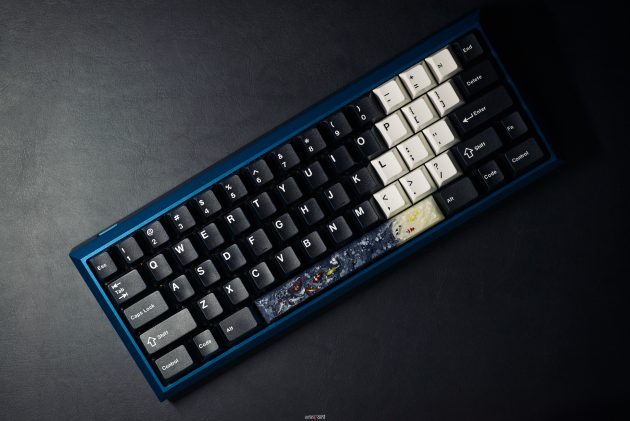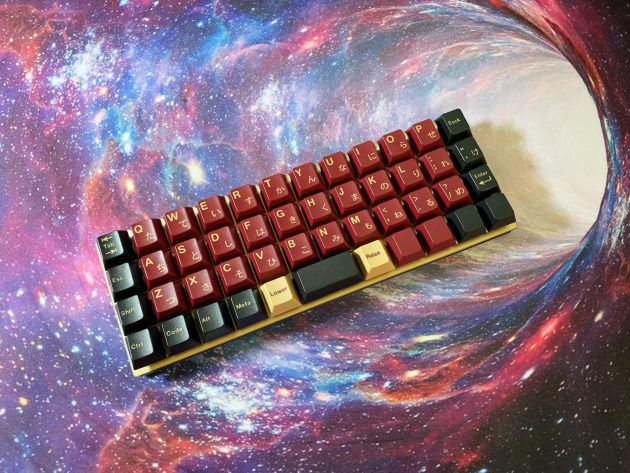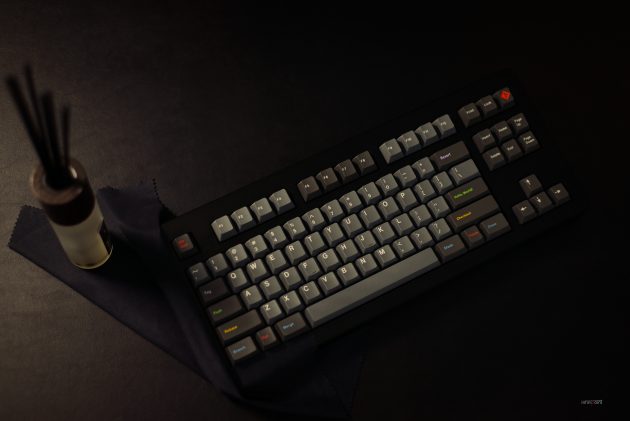Keyboard Wonderland – ENGLISH Version – Part I

Part 1 – the case
The main feature of the case is the form factor, sometimes mentioned as a layout:
- 100% keyboard – the usual – 105 keys, including dedicated F-keys, arrow keys, a numpad, and so on;
- 90% keyboard – 60% with F-keys and a numpad (nav cluster is missing – the nav cluster is composed of the dedicated arrow keys, the six keys above them, and the three keys above these);
- 80% or tenkeyless (TKL) – 100% keyboard without a numpad;
- 75% or a compact TKL – 100% keyboard without a numpad and with a nav cluster that is smaller in size but retaining the dedicated arrow keys;
- 70% – 60% with dedicated F-keys; around 66-68 keys in total;
- 65% – 60% with dedicated arrow keys; around 66-68 keys in total;
- 60% – 100% keyboard without dedicated F-keys, arrow keys, numpad, or navcluster; Esc is placed where the tilde usually is and the tilde is usually accessed by Fn + Esc. 60-61 keys in total;
- 40% – the “micro” layout; also called jokingly “The Remote” or “The Chocolate Bar”; these are not mass produced and consist in 12 columns and 4 rows of keys in a number that can be no greater than 48.
Another characteristic of the case is the material out of which it is built (or cut) from. The keyboards we are used to seeing around in the world are usually plastic but there are keyboard made of aluminium, steel, brass, or a combination of these. The OEM (prebuilt) keyboards are regularly made out of plastic although some have started offering aluminium as an option. I would also like to point out that when coming across statements like “aircraft grade aluminium” one should not forget that a keyboard’s place is on the desk and not attempting to achieve air buoyancy or aircraft speeds. And one should proceed with caution.
One can also come across the aforementioned metals in the composition of the plate or the keyboard weight(s), the latter being however almost exclusive to custom keyboards.

An example of a 60% US ANSI layout with split backspace and split R-shift and a 7U bottom row – the Tsangan layout. Fjell R4 with GMK White on Black and Black on White keycaps and a Jelly Key spacebar artisan.

An example of a 40% ortholinear layout with 47 keys (Planck v6.1 EOTW with GMK Red Samurai Ortho Kit keycaps)

Comentarii










Kinesis copied Maltron.
Ian, I’m sorry, but if you point far enough backwards in time a germ gets blamed for splitting in two. Maltron had the ideas but the execution has been thoroughly terrible throughout time and they never caught on. At the same time I didn’t want to touch upon too much history because the article is complex enough as it is.
That being said, Kinesis is one of the first actually ergonomic keyboards that is actually good and was available and came up in searches online back around 2005ish, so I went with it as the contemporary origins. Maltron will always be remembered for this abomination which sold for $400 – https://youtu.be/fkGpFeUQ49Y
Pingback: PFU/Fujitsu Happy Hacking Keyboard Professional Hybrid Type-S ENGLISH version – next lab501